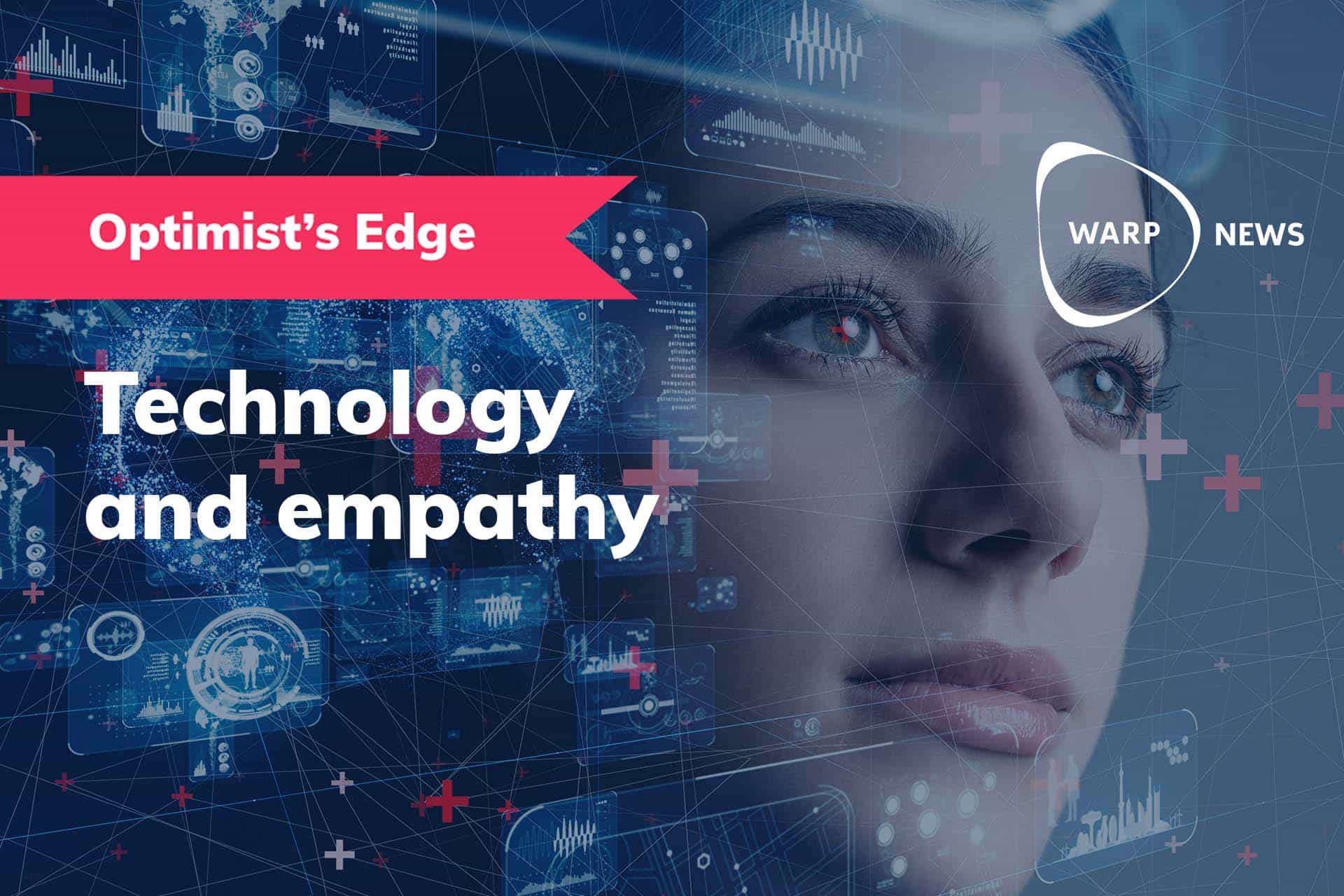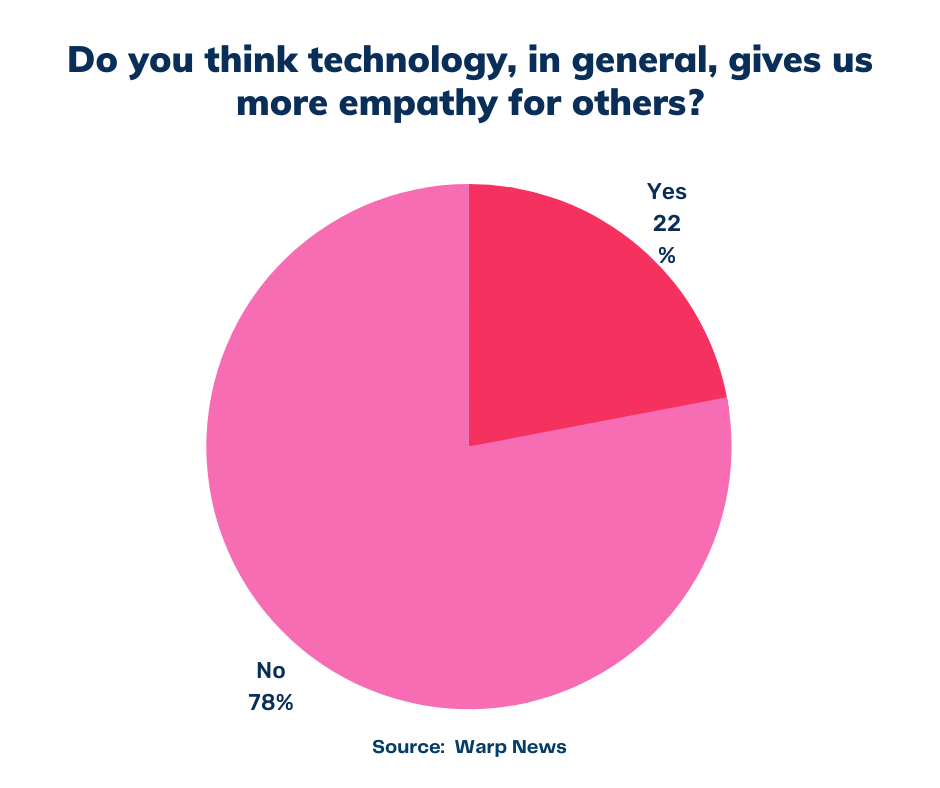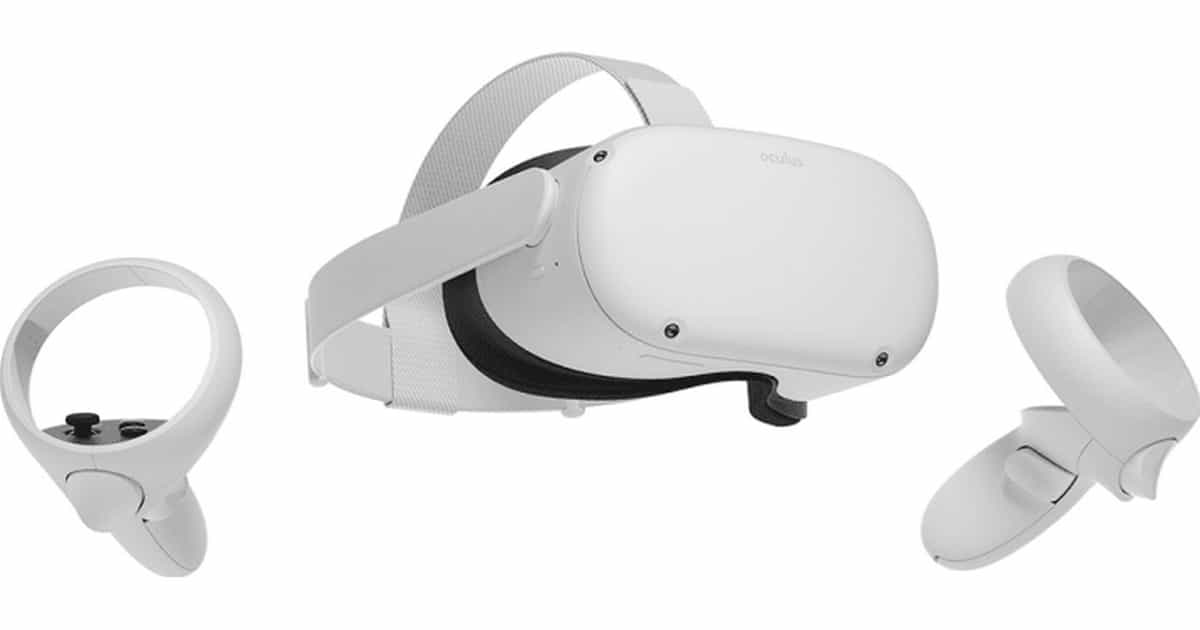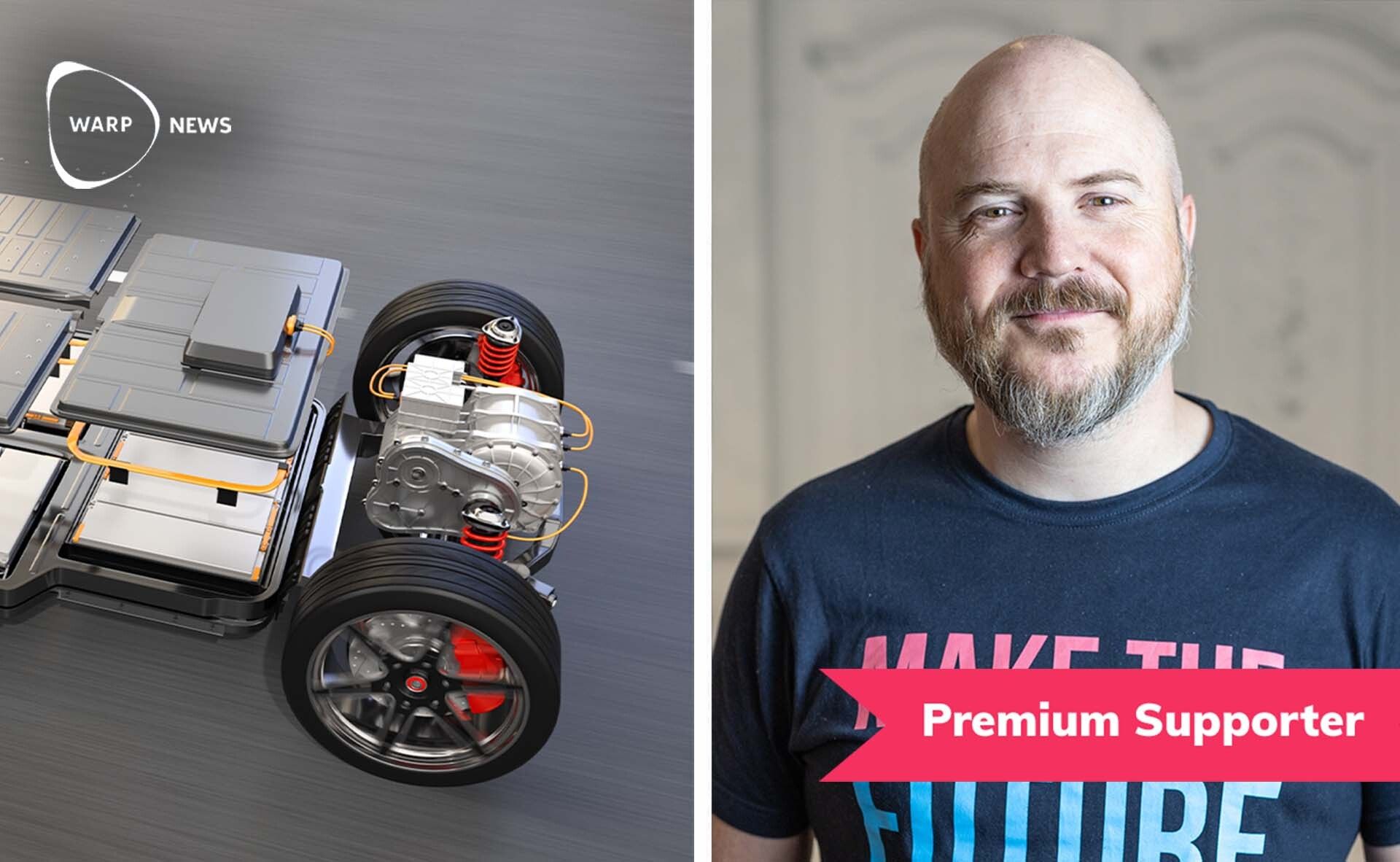
💡 Optimist's Edge: Tech your empathy to the next level
Many people, wrongly, see technology as being opposed to closeness, compassion, and empathy. Knowing how technology truly can affect our empathy gives you an edge. Ready to get it?
Share this story!
Summary
📉 What people think
Do you think technology, in general, gives you more empathy for others? 78 percent of the respondents in our survey do not think so. Many people wrongly see technology as being opposed to closeness, compassion, and empathy.
📈 Here are the facts
From stone axes to irrigation systems, humanity has always been technological. It defines us, and throughout history, technological advancements have made us more empathetic. The printing press not only gave books to the masses but also made it possible for the masses to emerge themselves into new perspectives and feel strong empathy with others.
This development has gradually evolved and become enhanced up to this day, with technology like virtual reality that can truly submerge us and let us see life through someone else's eyes.
💡 Optimist's Edge
As technology becomes increasingly powerful, it also has ever more power to create and entice feelings. Not least empathy. From vivid live reporting in 4k to being almost literally put "into someone else's shoes" in VR, we now have more powerful tools than ever to feel with others.
Of course, powerful tools can be abused. But this makes the case even stronger to give the edge to people with good intentions and use the technology to create a brighter future.
👇 How to get Optimist's Edge
Up until recently, the city of Fallujah in Iraq was occupied by the Islamic State. The war is over, but the city is still not safe. Mines and improvised explosives can await returning refugees. For most of us, it is hard to understand by just reading a text like this.
But in Home After War, you can go to Fallujah in virtual reality and meet returning refugees like Ahmaied Hamad Khalaf and his family. You walk around and see the city for yourself, hear the winds sweep in, and Ahmaied tell you about his fears, hopes, and dreams. This is just one of many examples of how to get an edge and get more empathetic through technology. Which other uses can you think of?

📉 What people think
Many people wrongly see technology as being opposed to closeness, compassion, and empathy. 78 percent of the respondents in our survey do not think technology, in general, gives us more empathy for others.

📈 Here are the facts
We humans have always used technology. Even in the oldest fossils ever found of homo sapiens, dated to 315,000 years ago, there are findings of different tools. Technology defines us, and so does empathy.
The ability to share and understand someone else’s emotions is an imperative component of successful social interactions. Empathy has been shown to increase understanding and motivate prosocial behaviors.
For humans, being social animals, empathy is key to prosperity and survival. Today, researchers, artists, and tech companies have tried to find novel ways to increase empathy via different empathy interventions. But they certainly do not start from square one.
The time and empathy machine
From stone axes to irrigation systems, humanity has always been technological and empathetic, and not surprisingly, the two are intertwined. Among many other things, throughout history, technological advancements have made us more empathetic.
The printing press not only gave books to the masses but also made it possible for the masses to emerge themselves into new perspectives and feel strong empathy with others.
When Jane Austen's Sense and Sensibility was published in 1811, it was possible for an English nobleman to become emerged and see life through the eyes of Elinor Dashwood.
The novel sold out its first print run of 750 copies in the middle of 1813. So in today's terms, the reach was tiny, and few could afford it. Today, billions can travel to the end of the 18th century and into Elinor's thoughts and insights. Books are not only times machines, but empathy machines made possible by the technology of the printing press.

Empathy for the World
This development has gradually evolved. Newspapers, radio, and television have informed us on an increasingly larger scale: from local to global. But the reports haven't just informed us; they have made us care about the events happening, and the people involved, around the world.
Simultaneously with this development, we have witnessed a rights revolution from the suffragettes and children's rights to the civil rights movement of the 1950s and 1960s. Movements demanding equal rights and protection from discrimination have spread across the world to women, people with disabilities, LGBTQ persons, the poor, inmates, and many more.

Coinciding with the development of broadcast media technology, we have seen unprecedented progress toward equality which is strongly connected with increased empathy.
Today, we can know and care about events on the other side of the planet. With the internet now going fully global thanks to satellite technology like Starlink, we can now get live reports from anywhere on earth. But it's no longer one-way communication as with the broadcast technologies. We can act and interact.
When three-year-old Alan Kurdi was found dead near Bodrum, Turkey, on September 2nd, 2015, the heartbreaking photos of him went viral and overnight changed millions of people's perceptions of the Syrian refugee crisis.
International responses changed dramatically due to this event.

Powerful technology creates powerful emotions
Increasingly powerful connections, cameras, and microphones create increasingly powerful media. This, in turn, creates increasingly powerful emotional responses.
“Technology is often blamed for eroding empathy, the innate ability most humans are born with to identify and understand each other’s emotions and experiences. However, when we harness technological advances for positive purposes, it can help promote richer experiences that develop empathetic concern and leverage people into action on causes that matter to them,” says psychologist Jocelyn Brewer commenting on another study on tech and empathy.
The ultimate empathy machine
The next step on this journey is Virtual Reality, VR. It is sometimes referred to as the “ultimate empathy machine” as it allows users to experience any situation from any point of view.
There have been several studies investigating this claim. One study compared the short and long-term effects of a traditional perspective-taking task and a VR perspective-taking task. This Stanford-developed virtual reality experience showed that over the course of eight weeks, participants in both conditions reported feeling empathetic and connected to the homeless at similar rates. However, participants who became homeless in VR had more positive, longer-lasting attitudes toward the homeless and signed a petition supporting the homeless at a significantly higher rate than participants who performed a traditional perspective-taking task.
Replicating the results from the study, there was no difference in self-report measures for any of the perspective-taking conditions. However, a significantly higher number of participants in the VR condition signed a petition supporting affordable housing for the homeless compared to the traditional and less immersive conditions.
Another example is a University of Arizona researcher embarking on a new project that uses virtual and augmented reality to re-create common experiences of racism and discrimination and let people "Walk in someone else's shoes." Yet another examines the effectiveness of using virtual reality to train healthcare providers in empathy, and a third helps people understand what it's like to face anti-abortion protestors.
What do you think you would feel if you virtually stood there in the crowd listening to Martin Luther King's speech or on the shore near Bodrum looking down on Alan Kurdi's body? Would you feel more emphatic? Would you feel more inclined to act?

These experiences are most likely going to be even more enhanced through artificial intelligence, AI. Empathetic technologies could be the next transformative application within this field with the potential to address bias and generally improve human health and happiness.
💡 The Optimist’s Edge
As technology becomes increasingly powerful, it also has ever more power to create and entice feelings. Not least empathy. From vivid live reporting in 4k to being almost literally put "into someone else's shoes" in VR, we now have more powerful tools than ever to feel with others.
Of course, powerful tools can be abused. But this makes the case even stronger to give the edge to people with good intentions and use the technology to create a brighter future.
The ability to share and understand someone else’s emotions is an imperative component of successful social interactions – with friends, colleagues, customers, partners, and everything else. Taking the perspective of another and understanding where they are coming from is an essential skill for many professions. Consequently, a lack of empathy is a serious disability that can cause major problems in life. But, dozens of studies show that empathy can be taught and learned.
Therefore, researchers, artists, and tech companies try to find novel ways to increase empathy via different empathy interventions. New technology is a key component, a bridge, and knowing how it can be used to increase empathy gives you an edge.
👇 How to get Optimist's Edge
Up until recently, the city of Fallujah in Iraq was occupied by the Islamic State. The war is over, but the city is still not safe. Mines and improvised explosives can await returning refugees. For most of us, it is hard to understand by just reading a text like this.
But in Home After War, you can go to Fallujah in virtual reality and meet returning refugees like Ahmaied Hamad Khalaf and his family. You walk around and see the city for yourself, hear the winds sweep in, and Ahmaied tell you about his fears, hopes, and dreams.
Project empathy is a collection of virtual reality experiences that help you see the world through the eyes of another. In The Letter, you can sit down with Shaka Senghor in his Detroit home and retrace his footsteps from the corner he was shot through the 19 years he spent in prison and 7 years in solitary confinement. Left Behind is a virtual reality scripted short designed to create empathy for children impacted by pain and loss after a parent is incarcerated. It follows a nine-year-old girl who ends up in a foster group home after her mom is incarcerated for a first-time offense.
What other experiences can you think of? Whose shoes would you like to step into? Or, whose shoes would you like someone else to step into?
Where do you think we need to get more empathetic, and how can technology help? How can it be used in workplaces and schools?
The possibilities are, of course, enormous, and with this knowledge, you now have an edge. What will you do with it?
❓ What more can you do?
Please share more ideas with your fellow Premium Supporters in our Facebook group.
Note: The survey mentioned in the article was done through Google Surveys on 500 respondents.
By becoming a premium supporter, you help in the creation and sharing of fact-based optimistic news all over the world.


